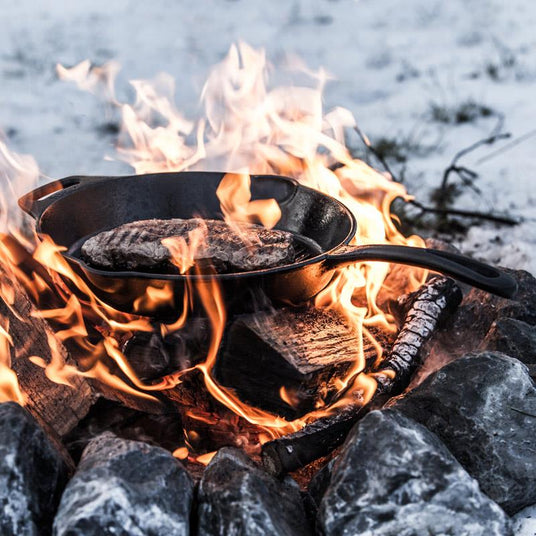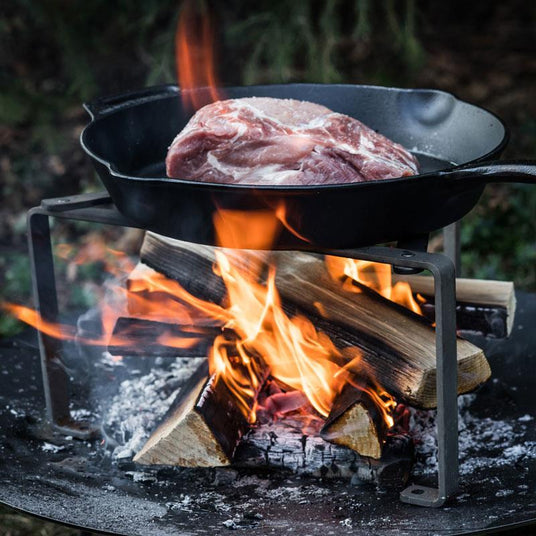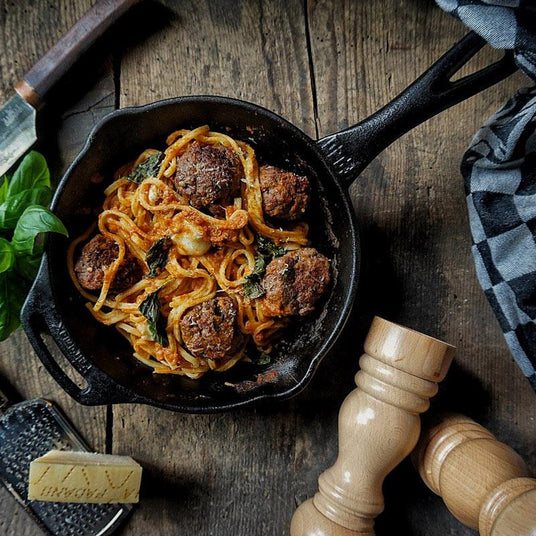
Silvesterabend Ideen: So feierst du zuhause oder draußen gemütlich ins neue Jahr
Entdecke Ideen für einen entspannten Silvesterabend – zuhause, mit gutem Essen und besonderen Momenten.
Plus de 200.000 clients satisfaits ⭐️⭐️⭐️⭐️⭐️ 4.9/5.0 Avis des clients
Tu as raté ton cadeau de Noël ? Téléchargez maintenant le bon, imprimez-le et offrez-le.
Set bestehend aus gusseisernen Pfannen: 25 cm & 30 cm
Das beste Material: Gusseisen
Auf allen Kochstellen verwendbar
Das Petromax Feuerpfannen-Set FP25-T & FP30-T vereint zwei Größen, die in keiner Küche und an keiner Feuerstelle fehlen dürfen. Mit 25 und 30 cm Durchmesser hast du für jedes Gericht die passende Pfanne zur Hand – von knackigen Bratkartoffeln bis zum saftigen Steak. Zwei Größen, ein Ziel: volle Hitze, volles Aroma und ein Kocherlebnis, das begeistert.
Beide Pfannen bestehen aus hochwertigem Gusseisen, das für seine herausragende Wärmeverteilung und Langlebigkeit bekannt ist. Dank der vorbehandelten Oberfläche sind die Pfannen sofort einsatzbereit und entwickeln mit jeder Nutzung eine noch bessere Patina. So entsteht bei jedem Bratvorgang ein zunehmend besseres Bratergebnis.
Ob Herd, Backofen oder Lagerfeuer – dieses Set ist auf allen Kochstellen zuhause. Gusseisen speichert die Hitze besonders lange, sodass du deine Gerichte direkt in der Pfanne servieren kannst. Der natürliche Antihafteffekt sorgt dafür, dass alles gelingt – vom zarten Fischfilet bis zum kräftigen Gulasch.
Mit dem FP25-T & FP30-T Set bist du für jede Situation bestens ausgestattet – drinnen wie draußen. Zwei Größen, ein Ziel: unvergleichlicher Geschmack, rustikales Kochgefühl und langlebige Qualität in Petromax-Manier.
Acheter maintenant, payer plus tard avec Klarna
Livraison rapide
Garantie de remboursement de 30 jours


